GIVE NOW before 2025 ends—your gift will be doubled to help children in need. Click here to 2x your impact!
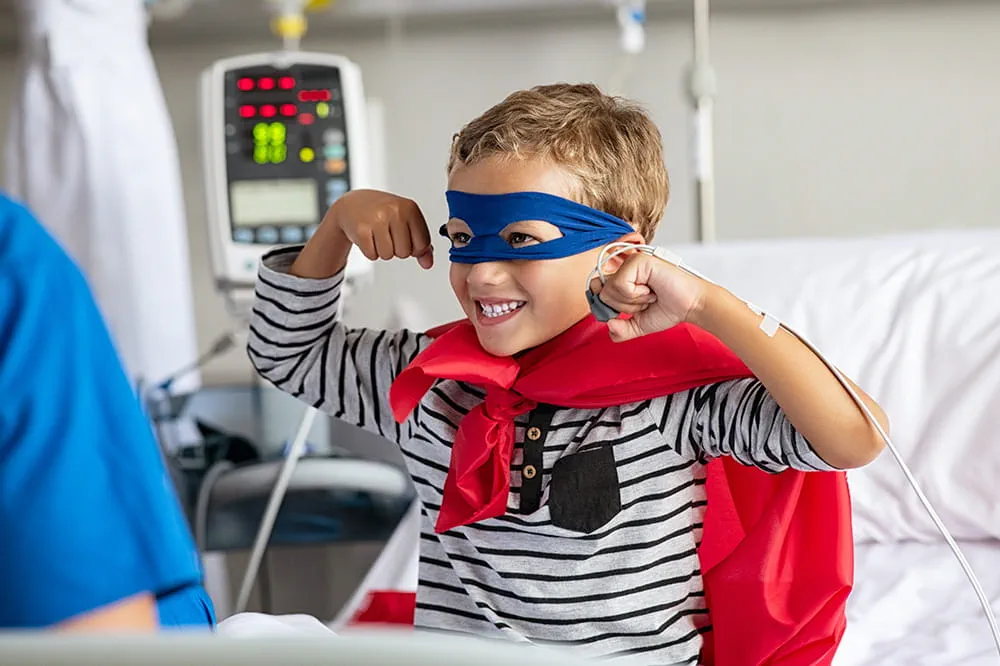
Ranked nationally in pediatric care.
Arkansas Children's provides right-sized care for your child. U.S. News & World Report has ranked Arkansas Children's in seven specialties for 2025-2026.

It's easier than ever to sign up for MyChart.
Sign up online to quickly and easily manage your child's medical information and connect with us whenever you need.
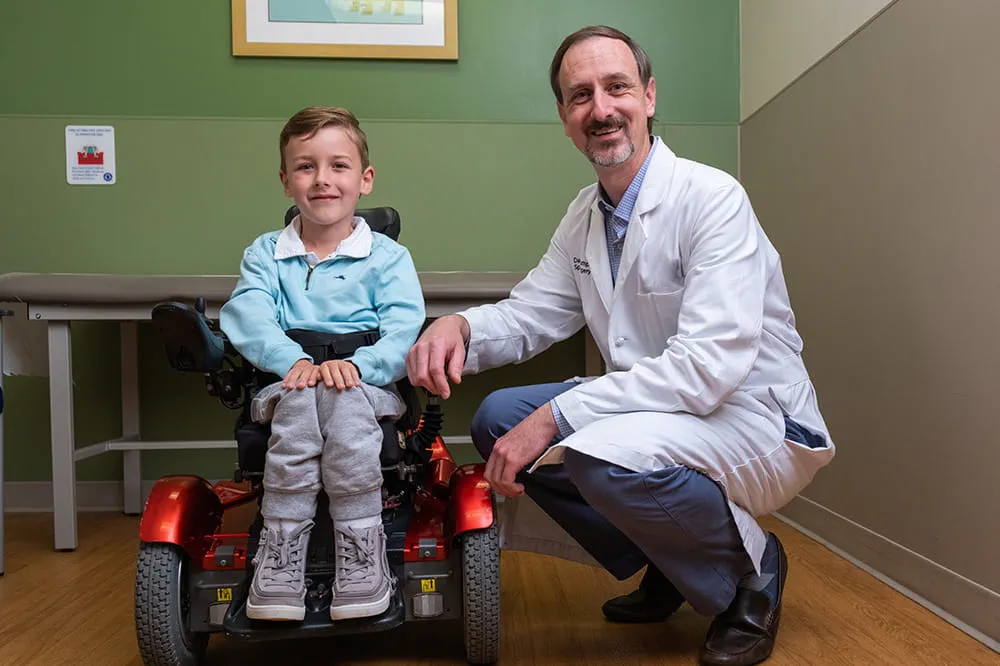
We're focused on improving child health through exceptional patient care, groundbreaking research, continuing education, and outreach and prevention.
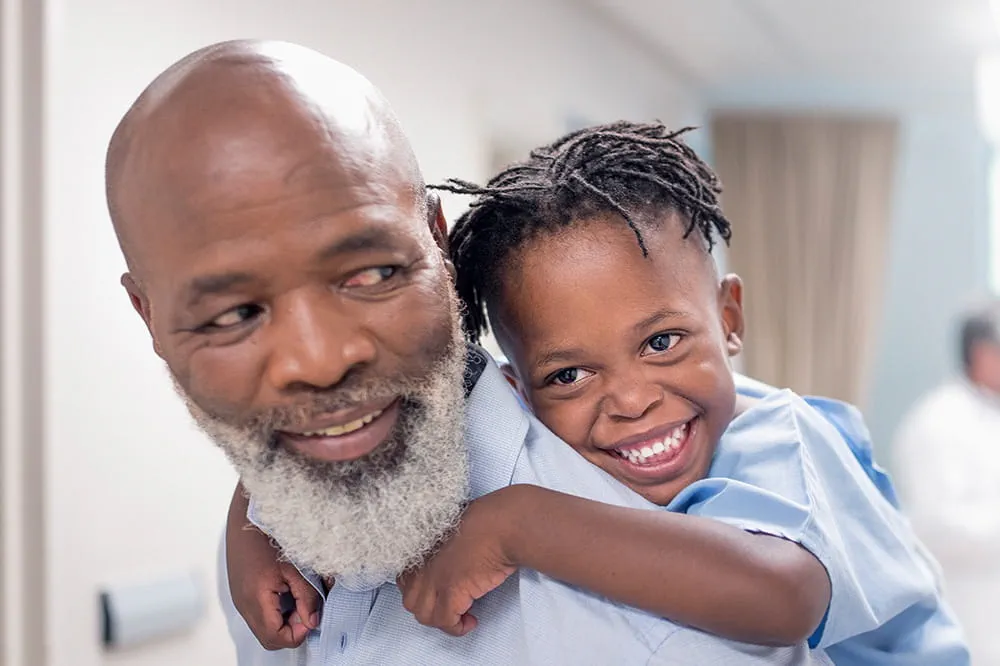
When it comes to your child, every emergency is a big deal.
Our ERs are staffed 24/7 with doctors, nurses and staff who know kids best – all trained to deliver right-sized care for your child in a safe environment.
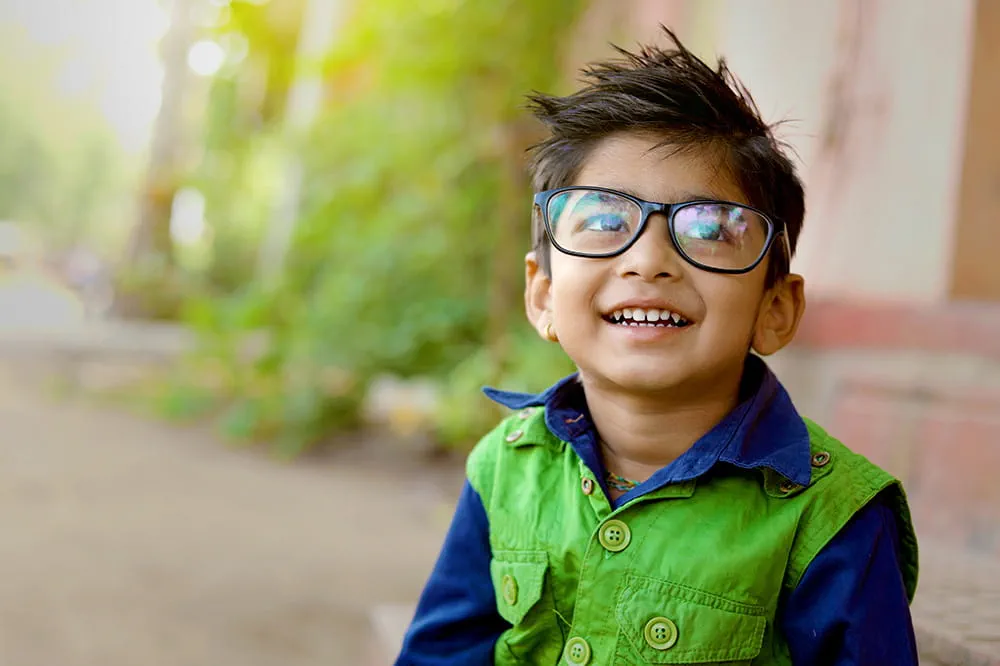
Arkansas Children's provides right-sized care for your child. U.S. News & World Report has ranked Arkansas Children's in seven specialties for 2025-2026.

Looking for resources for your family?
Find health tips, patient stories, and news you can use to champion children.

Support from the comfort of your home.
Our flu resources and education information help parents and families provide effective care at home.

Children are at the center of everything we do.
We are dedicated to caring for children, allowing us to uniquely shape the landscape of pediatric care in Arkansas.
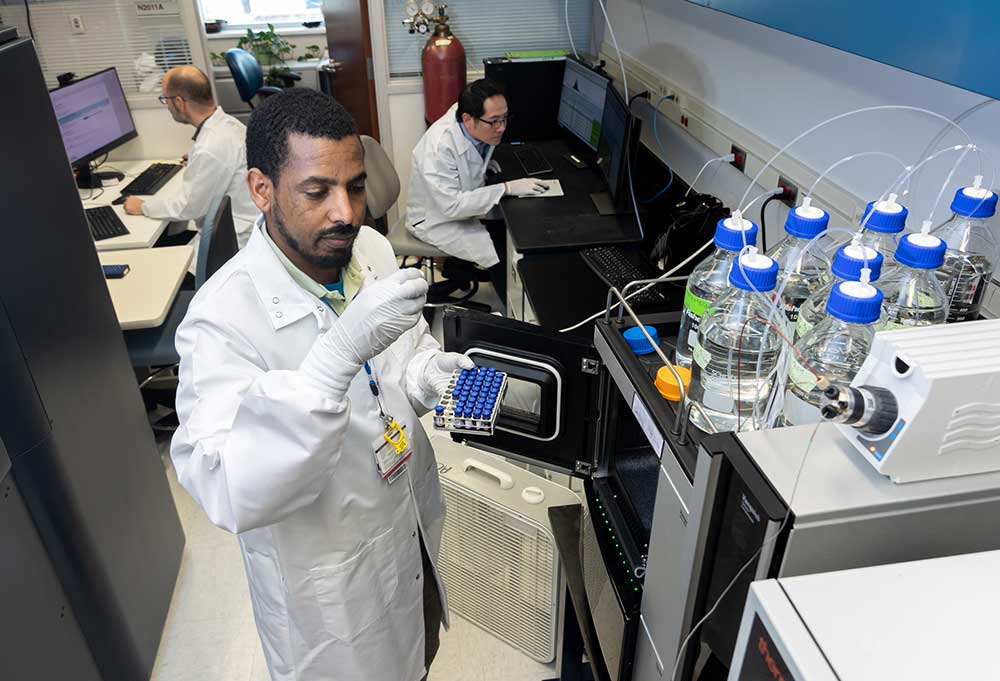
Transforming discovery to care.
Our researchers are driven by their limitless curiosity to discover new and better ways to make these children better today and healthier tomorrow.

We're focused on improving child health through exceptional patient care, groundbreaking research, continuing education, and outreach and prevention.
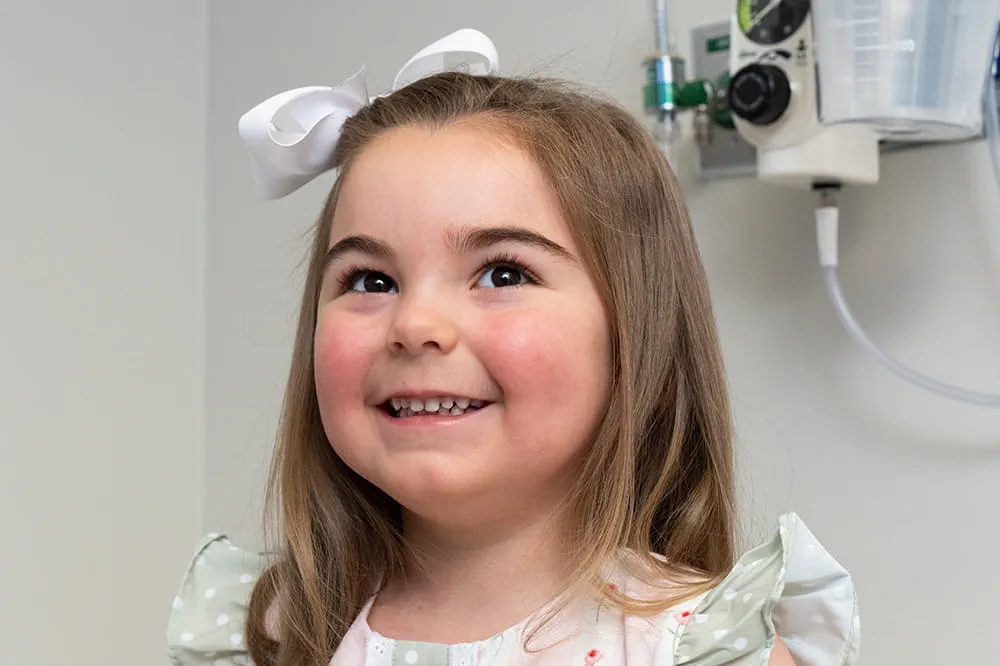
Then we're looking for you! Work at a place where you can change lives...including your own.
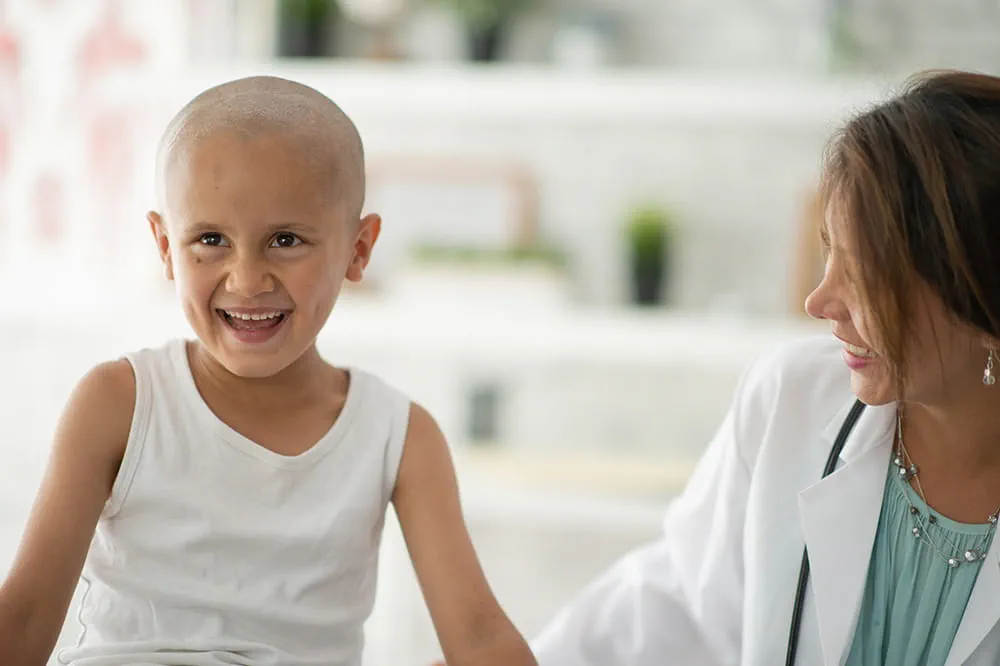
When you give to Arkansas Children's, you help deliver on our promise of a better today and a healthier tomorrow for the children of Arkansas and beyond
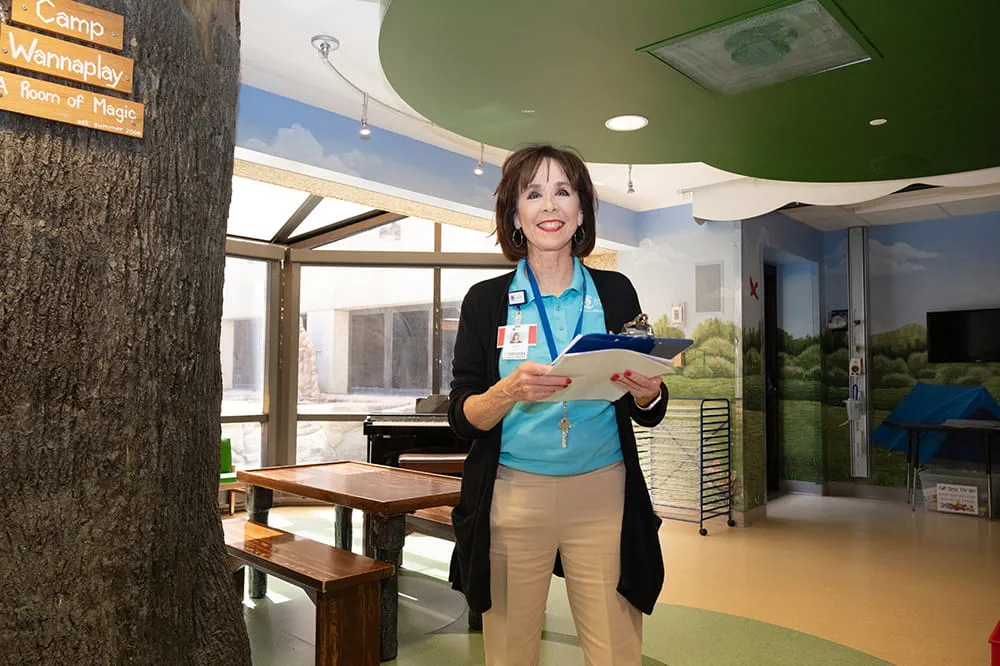
Become a volunteer at Arkansas Children's.
The gift of time is one of the most precious gifts you can give. You can make a difference in the life of a sick child.

Join our Grassroots Organization
Support and participate in this advocacy effort on behalf of Arkansas’ youth and our organization.

Learn How We Transform Discovery to Care
Scientific discoveries lead us to new and better ways to care for children.

Learn How We Transform Discovery to Care
Scientific discoveries lead us to new and better ways to care for children.

Learn How We Transform Discovery to Care
Scientific discoveries lead us to new and better ways to care for children.

Learn How We Transform Discovery to Care
Scientific discoveries lead us to new and better ways to care for children.

Learn How We Transform Discovery to Care
Scientific discoveries lead us to new and better ways to care for children.

Learn How We Transform Discovery to Care
Scientific discoveries lead us to new and better ways to care for children.
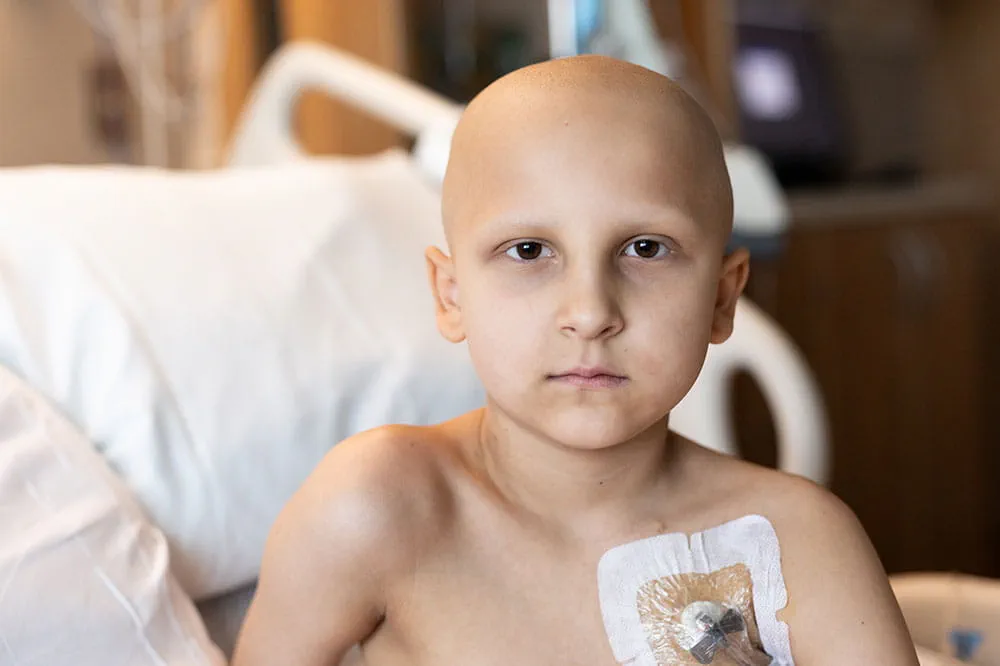
When you give to Arkansas Children’s, you help deliver on our promise of a better today and a healthier tomorrow for the children of Arkansas and beyond.
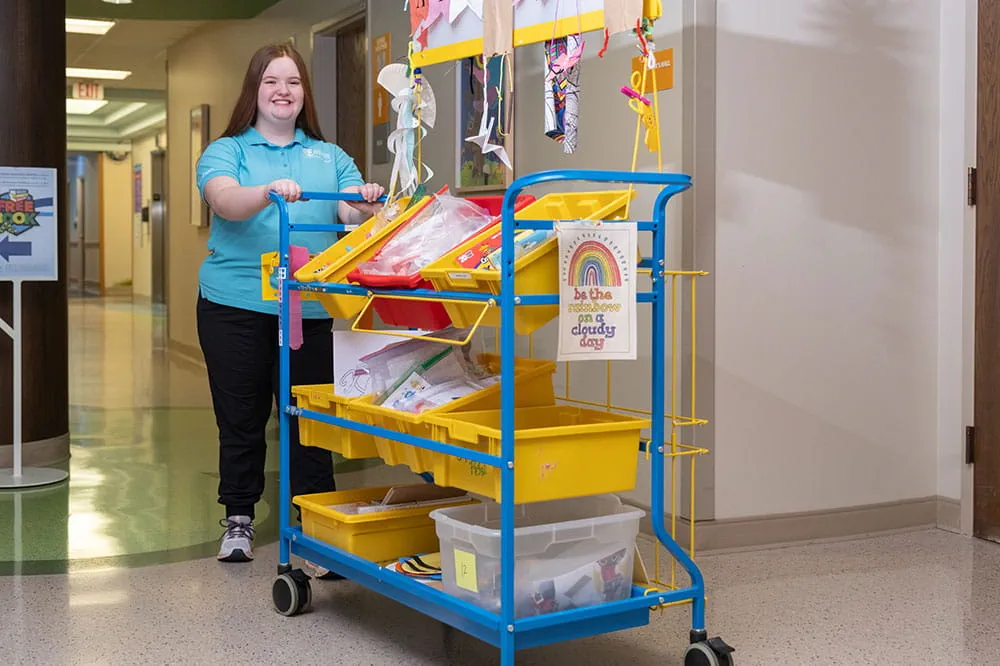
Your volunteer efforts are very important to Arkansas Children's. Consider additional ways to help our patients and families.
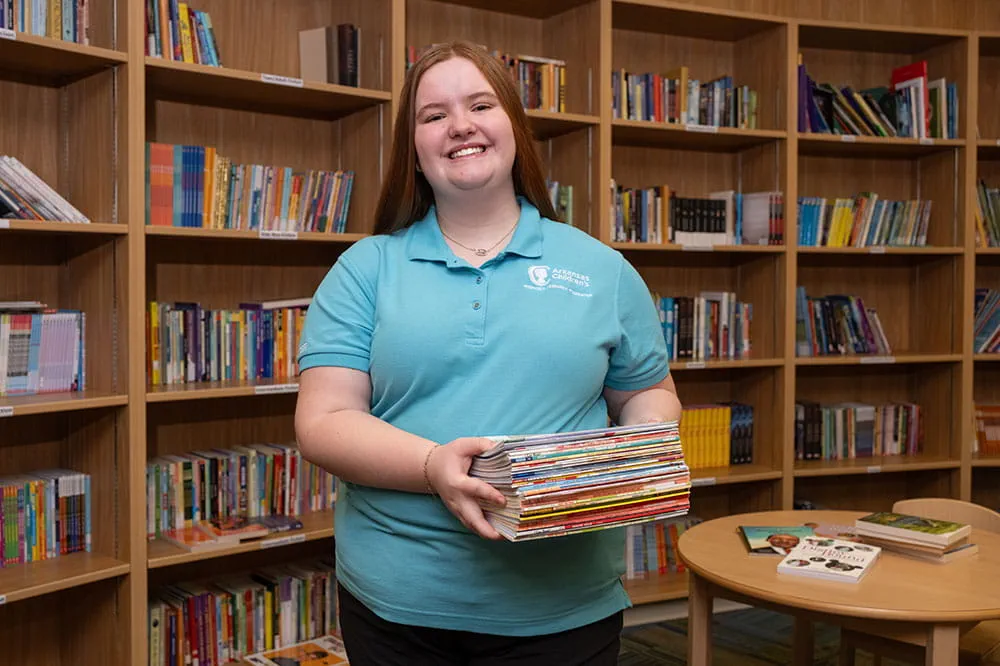
Join one of our volunteer groups.
There are many ways to get involved to champion children statewide.
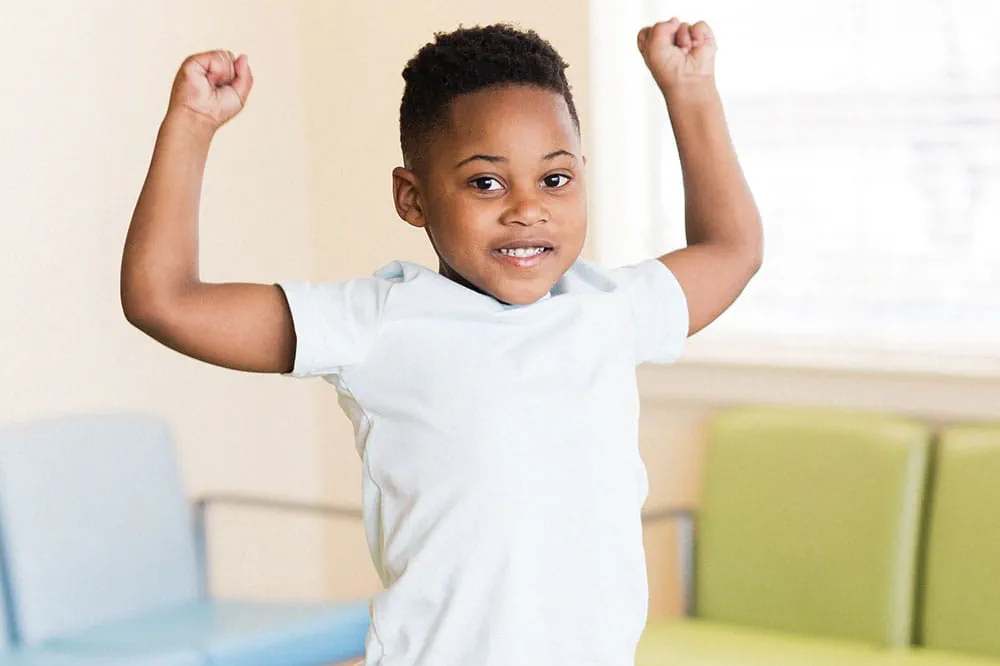
Make a positive impact on children through philanthropy.
The generosity of our supporters allows Arkansas Children's to deliver on our promise of making children better today and a healthier tomorrow.
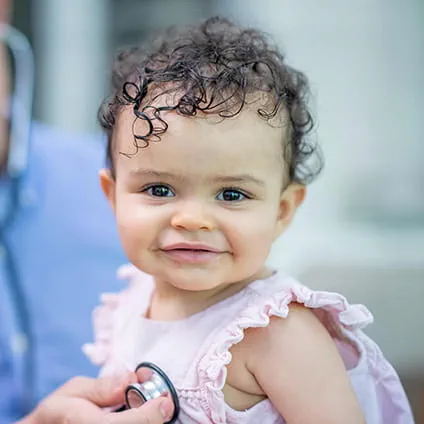
Read and watch heart-warming, inspirational stories from the patients of Arkansas Children’s.
Hello.
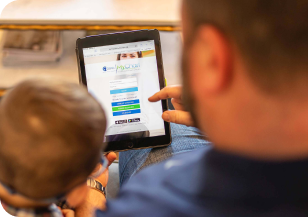
Arkansas Children's Hospital
General Information 501-364-1100
Arkansas Children's Northwest
General Information 479-725-6800


Advanced Robotics Adds to a Legacy of Leadership in Pediatric Spinal Surgery and Scoliosis Care
Updated date: December 02, 2025
David Bumpass, M.D., a pediatric spine surgeon at Arkansas Children’s, championed the efforts to acquire the Mazor X. Dr. Bumpass’ experiences with robot-assisted spinal surgery at the University of Arkansas for Medical Sciences (UAMS), where he treats adult patients and is an associate professor of in the department of orthopedic surgery and neurosurgery, convinced him of the potential benefits for pediatric patients.
"[Robotic guidance] helps surgeons place pedicle screws with as much accuracy as possible." He says precision is especially critical when working with the smaller spines of young children. "Anything we can do to increase the accuracy increases safety."
Pedicle screws are specialized screws made for attaching support rods to a spine that has been damaged in an accident or because of a condition like scoliosis. Investing in the Mazor X as a tool for placing screws safely adds to Arkansas Children's legacy as an innovator in pediatric scoliosis. In 2004, Richard McCarthy, M.D., then a surgeon at Arkansas Children's Hospital, invented and conducted the first Shilla procedure, a technique designed to dramatically reduce the number of surgeries needed to correct spinal deformity due to scoliosis.
First Shilla Procedure using the Mazor X
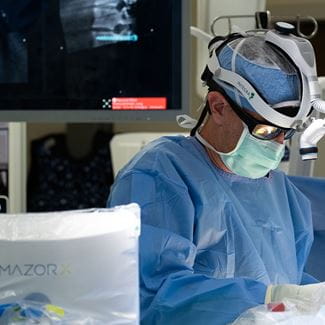 Arkansas Children's specialists diagnosed 6-year-old Winter "Winnie" Aston with syndromic scoliosis caused by Prader-Willi syndrome. X-rays showed two curves in her spine. Sometimes with young children, the spine corrects itself, straightening over months or years as the child grows. Winnie's care team monitored her for over a year after the initial diagnosis. Follow-up X-rays and MRI confirmed her thoraco-lumbar scoliosis was progressive and severe enough to require surgery. Winnie's father, Sean, said the family decided upon the Shilla procedure after consulting with the orthopedic specialists at Arkansas Children's. "Winnie still had a lot more growing to go. It made sense to choose the Shilla rods that would grow with her as she was growing."
Arkansas Children's specialists diagnosed 6-year-old Winter "Winnie" Aston with syndromic scoliosis caused by Prader-Willi syndrome. X-rays showed two curves in her spine. Sometimes with young children, the spine corrects itself, straightening over months or years as the child grows. Winnie's care team monitored her for over a year after the initial diagnosis. Follow-up X-rays and MRI confirmed her thoraco-lumbar scoliosis was progressive and severe enough to require surgery. Winnie's father, Sean, said the family decided upon the Shilla procedure after consulting with the orthopedic specialists at Arkansas Children's. "Winnie still had a lot more growing to go. It made sense to choose the Shilla rods that would grow with her as she was growing." Dr. Bumpass and Matt Landrum, M.D., FAAOS, a board-certified pediatric orthopedic surgeon at ACH and an assistant professor in the department of orthopedic surgery at UAMS, who specializes in complex spine deformity, hip dysplasia and other pediatric injuries, performed the first ever Shilla procedure using the Mazor X. The robotic guidance system worked as intended, making it easier for Drs. Landrum and Bumpass to accurately secure the Shilla rods to Winnie’s spine.
For Corinda, Winnie's mother, the time spent observing, diagnosing and discussing eased the stress of surgery. "I'm an anxious person, but as a mom, I'm 10 times worse. Letting my daughter have a big surgery at such a young age - it was hard for me to wrap my brain around being comfortable doing that, but Dr. Landrum made me feel comfortable. He always gave me options and never rushed anything. Recovery has been amazing too."
How Does Robotic Guidance Benefit Scoliosis Surgery?
In the past, when a child whose spine was still growing had scoliosis severe enough to require surgery, it meant many repeated surgeries. Rigid rods were attached to the spine to straighten it. Surgeons lengthened the rods, usually every six months, as the child grew."Dr. McCarthy's original Shilla surgery was groundbreaking," Dr. Bumpass explains, because it allows the rods to lengthen as the child grows, reducing the need for repeated surgeries. Since the invention of the procedure, the ACH team has been a world leader in Shilla surgeries, refining the technique with each new technology, like computer-assisted navigation and 3D-printed rods specifically tailored for each child. "The robot has the potential to benefit Shilla surgeries significantly because it allows for a more stable and accurate platform to place those screws with essentially no muscle disruption," he says.
Using robots to assist in adult and pediatric surgeries has increased significantly over the past two decades. Some robots allow a surgeon to plan the entire operation ahead of time and then actively monitor while the robot conducts the surgery. Others enable a surgeon to operate the robot with finely tuned controls, like an ultra-precise virtual reality headset and controllers. The Mazor X, on the other hand, is known as a "shared control" robot and acts more like a GPS, providing real-time guidance to the surgeon who makes incisions and places screws.
The Mazor X uses cameras and low-dose radiation CT scans during the surgery to provide real-time data. This data guides both the surgeon and the robotic arm to the ideal locations to make incisions and place screws. The robot autocorrects its calculations when movement happens on or around the operating table.
"Being able to plan exactly where we want and have the robot get us in the perfect spot, allows us to use a larger or longer screw, which is important because these kids are very active," says Dr. Landrum. He explained that larger screws provide stronger anchors for the implanted Shilla rods that help straighten the spine. Stronger anchors give a child the freedom to run, jump and play while the rods protect and guide their spine.
Even though the Arkansas Children's orthopedic surgery team specializes in the Shilla technique, it's one of many treatments available. "Every early onset scoliosis child is different, and their care should be tailored specifically to them," Dr. Landrum said. "You can't just say I'm going to place Shilla rods in every child, or a magnetic rod, a traditional rod, or a VEPTR growing construct. Having all those at your disposal is very important."
The Future of Pediatric Orthopedic Surgery and Scoliosis Care
When ACH added Mazor X to the surgical tools available, the hospital joined a small group of pediatric hospitals in the country offering this advanced robotic support for orthopedic surgery. Orthopedic specialists from many of those hospitals formed Spine Procedures Assisted with RoboTics and Navigation (SPARTAN) to learn from one another.At ACH, the benefits to patients needing surgery to correct scoliosis, either with Shilla rods, a spinal fusion or other surgical treatment, are evident and immediate with the addition of the Mazor X. Dr. Bumpass says those advantages expand even more by collaborating with other surgeons. He describes SPARTAN as "the hospitals most dedicated to seeing how this technology can benefit pediatric spine patients. It opens new horizons and possibilities for other types of surgery where being minimally invasive makes a big difference."
*This blog was written by the Arkansas Children’s content team and reviewed for medical accuracy by David Bumpass, M.D., and Matt Landrum, M.D., FAAOS.
Related Content
-
Video
How Arkansas Children's Hospital Uses the Mazor Robot to Advance Pediatric Spine Surgery
Bookmark How Arkansas Children's Hospital Uses the Mazor Robot to Advance Pediatric Spine SurgeryFind out how doctors at Arkansas Children's are using the Mazor Robot to help kids across Arkansas be better today and healthier tomorrow.

Scoliosis and spine care at Arkansas Children's
Learn how the Arkansas Children's orthopedic team treats problems like scoliosis and other forms of spinal care.Learn more

